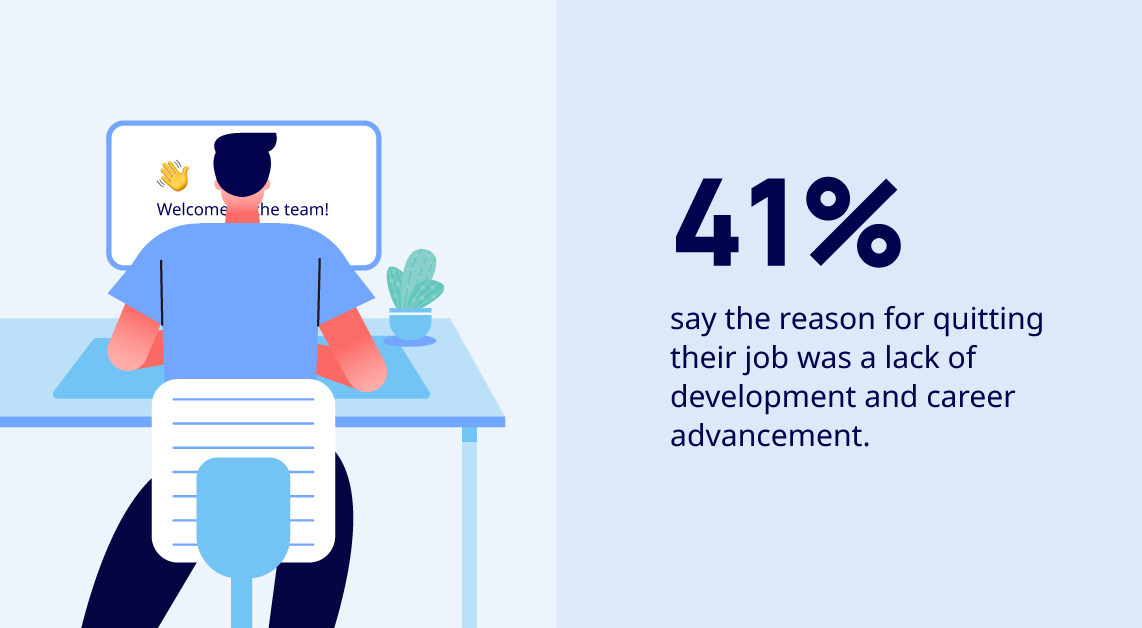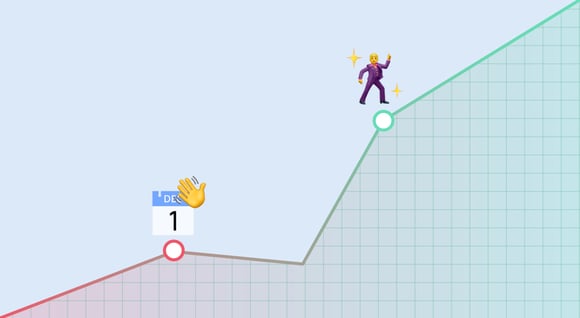The digital employee experience (DEX) is something that is hard to get around today. No matter if you have fully remote workers or a deskless workforce, the employee experience matter, and needs to be digital.
Digital learning is a great way to improve the employee experience. And there are many tools out there, like employee experience software and learning management systems (LMS) that can make our daily work with DEX easier.
However, let's start from the beginning.
What is Employee Experience?
In short, Employee Experience (EX) is all the interactions and experiences we get while we have a relation to a workplace. From the first impression, when we see the job post, to we wave goodbye to our colleagues on our final day.
It can be all from the work culture to the actual office environment, and the right tech tools, as well as engagement, employee development, and pre - and onboarding. It's all part of EX.
The Importance of Great Employee Experience
Employee recruitment and management are not easy tasks. However, as an employer, you have both the responsibility and a clear interest (or at least, should have) in providing people with the appropriate treatment in the appropriate situation.
The catalyst that turns the wheels is real brains and soft skills. And a great employee experience is what businesses must create to ensure that their talents have the best conditions to deliver what they are expected to deliver.
Make sure to provide your employees with the best motivation to stay with your company. In general today, people are staying at their jobs for shorter and shorter periods of time. 43% of the millennial generation are expected to change jobs every two years.
Competent and talented employees are possibly the most valuable resource for businesses. In other words, there are compelling reasons to improve the employee experience in order to increase the likelihood that your top performers will want to stay as long as possible.
Enhance the Employee Lifecycle by Providing a Digital Employee Experience
Employee retention is clearly a priority for most companies. In the Nordics, we see that it is even the top one priority for HR & L&D professionals in 2023. Additionally, according to a McKinsey study from 2022, 41% say the reason for quitting their job was a lack of development and career advancement.
 And this is something that can be worked on. We know there are many things to bare in mind, but let's focus on the part that employees tend to miss right now. The learning and development part.
And this is something that can be worked on. We know there are many things to bare in mind, but let's focus on the part that employees tend to miss right now. The learning and development part.
Going digital with employee training for the entire employee journey might seem like a Mount Everest task. But this is where your HR team can create a more positive employee experience full of learning experiences throughout the employee lifecycle.
And even if you don't have a huge team, it will be worth it in the long haul. Cause, let's face it. Giving your employees ways to learn and develop will not only make them happier and stay with your company longer, it will also make the company develop, grow and stay innovative. Plus, with digital tools such as an LMS, once it is all set up, it will save you and your team a lot of time as well.
Learn more about how to implement an LMS in this e-book.
Your LMS as an Employee Experience Platform
You do not climb Mount Everest in one day. And you do not create a digital transformation in a day. At Learningbank we always recommend to start small.
One of the most efficient ways to provide a good DEX is to give your employees digital learning. It will make it easy to streamline your employee experience when it comes to creating and delivering employee training.
With an LMS or a learning platform, it will be easier to deliver your DEX strategy.
The LMS will make it easier for you to:
- Provide digital preboarding & onboard new employees
- Ensure the individuals' personal and professional development
- Reskill or upskill employees to new functions
- Reboard employees after parental leave or leave of absence
- Secure a unified and personalized employee journey and experience
For your own and your employee’s sake, take the employee experience seriously. Consider whether you should invest in employee experience software that can help you streamline and enhance the efficiency of the process.
Digital Employee Experience Software
Just as there are tons of different LMS software, there are just as many employee experience software. However, some learning management system software can also be seen and used as employee experience software.
Some of the key features for an employee experience software:
- Designed with all users in mind (admins, end-user & the business)
- Provide easy-to-use analytics for HR/L&D
- Allows employee feedback
- Promotes employee engagement & productivity
- Supports employee retention & development
3 Examples - How Digital Employee Training Enhances the Employee Experience
Creating digital employee experiences can be done in many different ways. Here are three examples of how three different companies are using digital learning to create a better digital employee experience and employee journey. They all use their learning management system as employee experience software.
7-Eleven
The convenience franchise, 7-Eleven is a famous brand all over the world. Food quality and alert employees are essentials. Reitan Convenience Denmark A/S, who is responsible for the brand in Denmark, decided to digitize part of their employee experience and create digital training for their employees. The solution was gamified digital learning.
The buzzwords: Feedback, focus, interaction, and access were all in place. The learning games were available for everyone 24-7. On the bus ride when the young employees were on their smartphones, o Furthermore, the learning games involved interaction and a magnetic visual universe with a storyline that 7-Eleven employees could relate to. Read more about how 7-Eleven enhanced their DEX here.
Arbejdernes Landsbank
The Danish bank Arbejdernes Landsbank realized that employees were no longer staying 30 years in the company. But they wanted to keep the employees for as long as possible. So how did they improve employee retention?
The first thing they did was look at where in the employee journey they could provide better experience and value to make employees stay longer.
The answer started in the preboarding. Arbejdernes Landsbank created a digital universe, where new employees now learn the values and history of the bank. Small interactive challenges come up on employees' way through the preboarding module to get the maximum learning outcome. Read more about the preboarding module here.
McDonald's
McDonald's has won prize for their employee experience. And a big part of that is their digital employee trainings. Prior to going digital, it was a big challenge to train new employees at the right pace, but with new digital opportunities, training would speed up and still give the best knowledge for new employees.
McDonald's also made sure that their employees could access all the content in one place. And that the other systems, such as the shift planning tool, also were accessible at the same place. That brings a smoother digital experience for employees, even for those working remotely, who don't have to log on to multiple platforms to navigate their workplace. Read more about the digital employee experience at McDonald's here.


